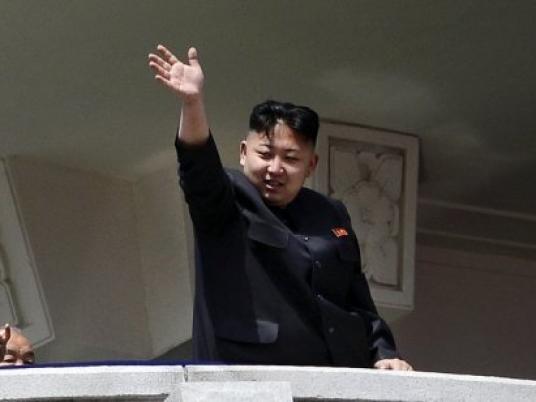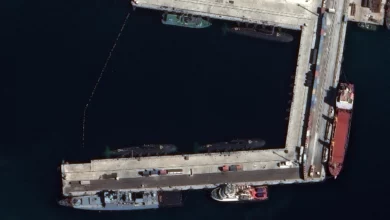
Satellite imagery suggests that North Korea has restarted a research reactor capable of producing plutonium for weapons at its Yongbyon nuclear complex, a U.S. research institute said on Wednesday.
U.S.-Korea Institute at Johns Hopkins School of Advanced International Studies said a satellite image from 31 August shows white steam rising from a building near the hall that houses the plutonium production reactor's steam turbines and electric generators.
"The white coloration and volume are consistent with steam being vented because the electrical generating system is about to come online, indicating that the reactor is in or nearing operation," said the Washington-based institute.
The reactor can produce 6 kgs (13.2 lbs) of plutonium a year, the report added.
There was no immediate comment on Wednesday from the International Atomic Energy Agency (IAEA), the U.N. nuclear watchdog.
A spokesman for the State Department's Bureau of East Asian and Pacific Affairs declined to respond the report, citing a policy of not commenting on intelligence matters, but said Pyongyang's "nuclear program remains a matter of serious concern."
The spokesman repeated Washington's longstanding call for North Korea to comply with a 2005 aid-for-disarmament agreement signed by North Korea, its neighbors and the United States. Under that pact, Pyongyang would have dismantled its nuclear program in exchange for economic and energy aid.
North Korea has conducted three nuclear tests since 2006.
"Acknowledging that we are not completely certain yet, this is very disappointing but not at all unexpected," James Acton, an analyst for the Nuclear Policy Program at the Carnegie Endowment for International Peace, a Washington think tank.
"It's not unexpected because we've been able to see for months through satellite imagery that North Korea has been working on repairing the five-megawatt electric reactor," he said in a telephone interview.
Pyongyang announced in April that it would revive the aged Yongbyon research reactor that yields bomb-grade plutonium but stressed it was seeking a deterrent capacity.
"ANOTHER SLAP IN THE FACE"
Nuclear experts said at the time it would probably take about half a year to get the reactor up and running if it had not suffered significant damage from neglect.
The Yongbyon reactor has been technically out of operation for years. In 2008 the North destroyed its cooling tower as a confidence-building step in the six-nation talks.
"Restarting it is another slap in the face to the international community, indicating that North Korea has no intention whatsoever of abandoning its nuclear weapons," Acton said.
North Korea said in July it would not give up its nuclear deterrent until Washington ends its "hostile policy" towards Pyongyang, although it was ready to revive nuclear talks.
The country tested a nuclear weapon in February and spent the first three months of 2013 issuing bellicose threats including a warning that it would launch a nuclear attack against the United States and South Korea.
Recently, however, Pyongyang has been on what analysts describe as one of its periodic charm offensives, agreeing with Seoul on Wednesday to re-open a shuttered industrial park on a trial basis. The Kaesong industrial zone lies inside North Korea and was closed when Pyongyang pulled its 53,000 workers out in April amid rising tensions.
The Johns Hopkins report was released as U.S. Special Representative for North Korea Policy Glyn Davies was on the Tokyo leg of a September 8-13 tour of South Korea, China and Japan for consultations on policy toward Pyongyang.




